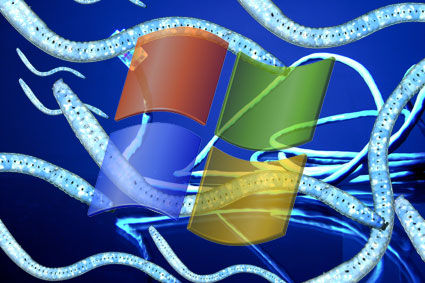What is “Conficker time bomb”?
 Just a couple of hours have left for the blast of the Conficker time bomb! The Conficker time bomb is expected to blast tomorrow – on April 1; but, it’s still unknown whether the Conficker time bomb is an April Fool’s Day prank or a real threat. According to reports/rumors, the latest variant of the Conficker worm will hit the online computers around the globe, on the April Fool’s Day; that’s why it has been dubbed as “Conficker time bomb”.
Just a couple of hours have left for the blast of the Conficker time bomb! The Conficker time bomb is expected to blast tomorrow – on April 1; but, it’s still unknown whether the Conficker time bomb is an April Fool’s Day prank or a real threat. According to reports/rumors, the latest variant of the Conficker worm will hit the online computers around the globe, on the April Fool’s Day; that’s why it has been dubbed as “Conficker time bomb”.
Mike Stute of Dallas-based Global DataGuard, a network security firm, said, "Everybody is a little bit nervous about it. It could be nothing. It could be very dangerous."
However, some security researchers view the Conficker bomb as a real threat, rather than an April Fools’ Day joke. “It’s definitely serious,” said Kevin Haley, director of security response at Symantec. According to security scientists, the Conficker time bomb that will explode out the latest variant of the computer worm, Conficker, also known as Kido or Downadup, could be lethal to the computer systems.
Considering the potential dangers of the Conficker worm, the US Department of Homeland Security on Monday rolled a tool to detect whether a computer is infected by the Conficker worm. The DHS-developed detection tool scans computers for the Conficker worm. The Conficker worm-scanning software is created by the DHS US-CERT team. The DHS-developed Conficker detection tool is available for federal and state government agencies, commercial vendors, and critical infrastructure owners. It is available through Government Forum of Incident Response and Security Teams Portal and through various Information Sharing and Analysis Centers, for private-sector partners.
According to the US-CERT director Mischel Kwon, while a slew of worm-mitigation tools are available out there, the DHS-developed Conficker detection tool is the only free tool available for enterprises like government agencies. He said, "Our experts at US-CERT are working around the clock to increase our capabilities to address the cyber risk to our nation's critical networks and systems, both from this threat and all others.”
"It’s like a hurricane coming when something like this happens. We’ve been seeing a barrage of these kinds of viruses for a year now. This one could be the most serious of them all," said Margaret Perez, speaking of the latest variant of the Conficker worm that is expected to hit computers and networks around the globe on April 1. Margaret Perez combats viruses on business computer networks as owner of Tech Support Mobile Services in Fort Worth.
Whether the Conficker time bomb is a joke or real threat, it will come out right tomorrow. In any case, Security experts have advised the computers users not to panic, instead get their computers equipped with powerful protects and get their security programs updated to protects their computers from the Conficker.
According to security researchers, the latest variant of the Conficker worm could infect the millions of computers worldwide, without right protection tools or programs. The Conficker worm shatters the defense systems of the infected compute systems. The latest variant of the Conficker worm is expected to be a major update of the malware, which is expected to blast out update requests to hundreds or thousands of its 50,000 domains.
The Conficker worm first appeared in November last year. It is a malicious software program that spreads exploiting a security flaw in Microsoft Windows. Conficker.B was detected in February this year. It spreads through shared networks and through removable storage devices, like USB drives, through the AutoRun function in Windows. The A and B versions of the Conficker infected around 12 million computers worldwide. The most notable feature of the Conficker worm is that it can patch its own vulnerability on the computers infected by it.
Conficker.C appeared earlier this month. It closes security services, stops computers from getting connected to security Web sites, and downloads a Trojan. It links up to other infected computers through peer-to-peer networking, by building peer-to-peer communication between infected systems and a new domain-generation algorithm. Conficker.C also adds several defensive tools aimed to avoid detection and removal by disabling Windows Automatic Updates and Windows Security Center. It makes antivirus programs ineffective and blocks access to the security sites.